In a pioneering effort to bring together the Buddhist and Jewish communities, the Jewish Children’s Museum in Brooklyn, N.Y., hosted yesterday the Sri Lankan ambassador to the United Nations along with his convoy of Buddhist monks.
Buddhist Monks Tour Jewish Children’s Museum
In a pioneering effort to bring together the Buddhist and Jewish communities, the Jewish Children’s Museum in Brooklyn, N.Y., hosted yesterday the Sri Lankan ambassador to the United Nations along with his convoy of Buddhist monks.
After a guided tour of the most popular and interactive exhibits, the delegation of Buddhist leaders, United Nations representatives, and rabbis conducted a dialogue around the similarities between Buddhist and Jewish fundamental principles of peace and tolerance.
“This is a big opportunity to find out about the Jewish religion,” commented Sri Lankan Ambassador to the UN Dr. Palitha Kohona. Throughout the tour of the museum the monks identified similarities in customs of dress and dietary laws practiced in both religions. The two groups joked about standing out in a crowd – the rabbis with the traditional kipa [skullcap] and tzitzit [fringes], and the monks with shaved heads and brightly colored robes. In addition to observed directives, the ambassador noted the similar principals between Buddhism and Judaism: “tolerance, self-understanding, and non-violence.”
The relationship between the JCM – which is run as a division of Tzivos Hashem, the children’s arm of Chabad-Lubavitch – and the Mission of Sri Lanka to the UN was born almost two years ago when Senior UN Correspondent Gloria Starr-Kins introduced representatives to one another. The relationship further developed when the JCM hosted the Sri Lankan Ambassador to the UN, along with 40 other UN staffers and diplomats, in October 2009.
The tour yesterday began with an exhibit about Jewish morals that “make the world a better place,” explained tour guide Goldy Cohen. “It is not exclusive to Judaism, it applies to everyone equally,” she added. The exhibit showcases moral values such as uplifting the sick, respecting parents and elders, giving to others.
An officer from Kohona’s delegation offered a quarter to be used in an interactive station in the exhibit – a large gumball machine. Out rolled a white gumball. All eyes followed the white gumball as it wound its way through a maze along one wall and landed in a miniature hospital near the floor – representative of how a quarter can be used to give to others rather than to take for one’s self. “Every person put into this world has choices to make and can choose how to react,” said Cohen, as she led to the group toward the Kosher Exhibit.
Buddhist-born student at Columbia University, Savan Wijewardene, pointed out to the group that the Jewish dietary laws of not eating dairy with meat are similar to the Buddhist dietary customs. After touring the Six Days of Creation Exhibit and the Shabbat Exhibit one of the monks asked a young rabbi present to explain the meaning of the fringes he wore, which were hanging from his belt to his pockets. He explained to the captivated group that the numeric value of the tzitzit totals 613, the number of commandments in the Bible. “We, too, have things to remind us,” noted a monk clad in bright orange linen robes.
“By having a greater understanding of Judaism, people will be nicer to Jews and even more than that, have tolerance of all cultures,” said the head monk of Staten Island Buddhist Temple, Bhante H. Kondañña.
Director of Development at the JCM Rabbi Mendel Spalter opened a sit-down dialogue by connecting the gathering with the recent celebration of the Jewish New Year. “We celebrate the creation of man on the New Year,” Spalter spoke from the podium. “Everyone is equal and unified under G-d, therefore it is very apropos for us to gather now,” he said and concluded with a blessing for a happy and healthy year.
Rabbi Simon Jacobson, best-selling author and director of A Meaningful Life Institute, spoke about the New Year saying that on the High Holidays people communicate with G-d and connect to a higher reality. He paralleled that bond with intercultural connections. “Words can be traps. We should try to find a medium that transcends words in order to connect to each another and express the inexpressible.” Jacobson then led a word-less hymn, called a niggun, sung by Chabad-Lubavitch Hasidim on the High Holiday of Yom Kippur.
“Just like every music note is necessary on its own and as part of a greater composition, every person is indispensable,” expressed the rabbi.
Ambassador Kohona addressed those present, saying, “I hope this will lay the foundation for future relationships between our two communities.” He noted the similarities in beliefs that Jacobson touched upon during his talk that, “the world is being renewed constantly and changes moment to moment.”
“The most important factor is to bring happiness into the world,” declared the head monk of New York Buddhist Temple, Venkurunegoda Piyatissa. “I appreciate the effort to bring peace and unite us,” spoke the 80-year-old monk softly into the microphone.
Kins, who initially introduced the two groups to one another more than one year ago, said it is her hope that such intercultural events spur “peace around the world. I am just brimming over with the pleasure of this,” she added.



































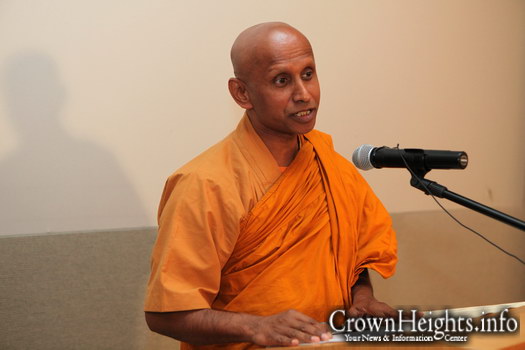




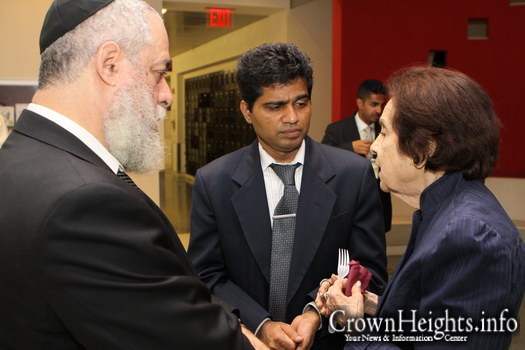

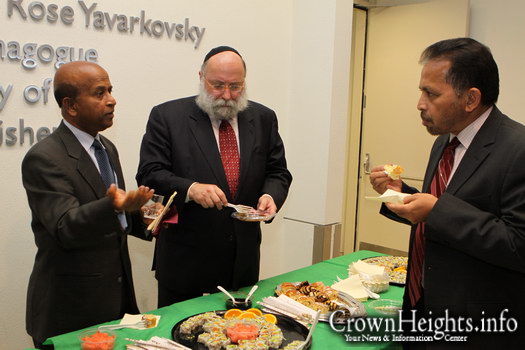


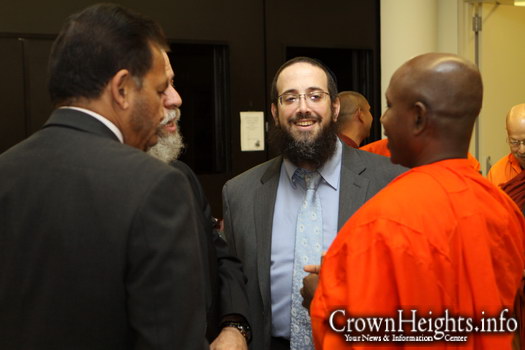
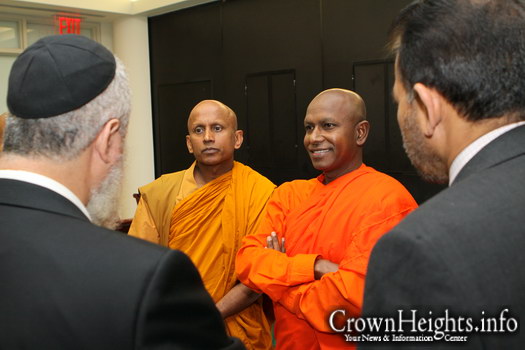
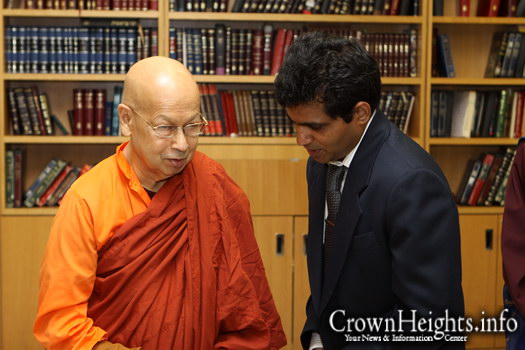
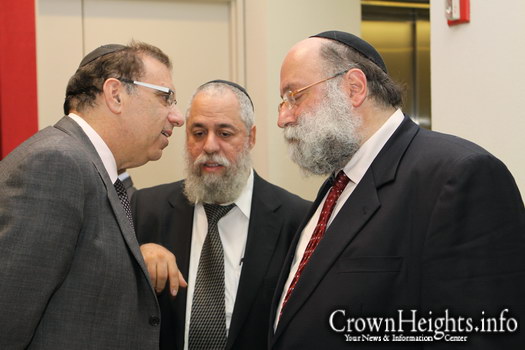
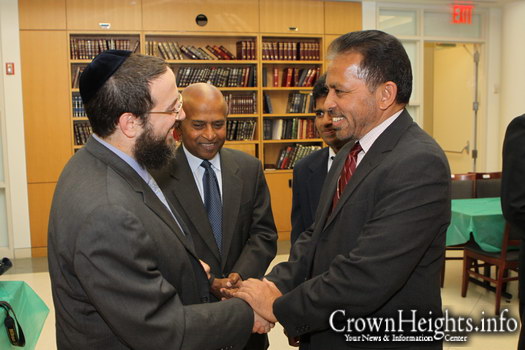
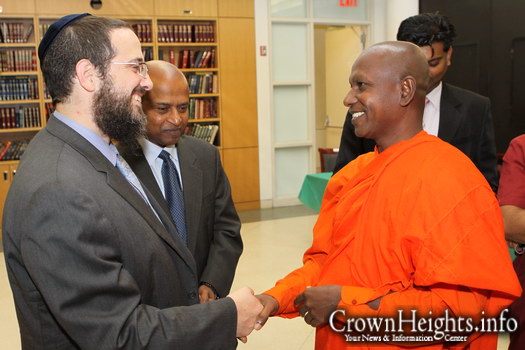














This article makes me proud!
I’m sure a Rav was consulted to know how to deal with the ovdie avoda Zarah.
As nice as they are, there are some yahrog val yavor issurim involved.
Glorifying ovdie avodah zarah?!
Mayleh a yisrael mumar, af al pi shechatah YISROEL hou. An urel?!?!?!?! oved avodah zarah l?!?!?!?!
GAZA KATOM
At least someone still cares about Gaza expulsion!
reuven
sooo nice to see this
T-SHUVAH
I would hope that one of our representatives encouraged these gentleman to point out to any of their Jewish students – known as “JewBues”- that they have a precious heritage of their own to explore. Jews get involved with Buddhism ( and there are literally TENS OF THOUSANDS worldwide who are deeply committed to this Avoda Zorah )simply because they seek ruchnious expression, and their conservative/reform/non-existent upbringing did not tell them the TRUTH of Yiddishkeit. There are BT’s who became frum simply because their Buddhist teacher encouraged them to seek authentic Judaism. It is crucial, and may save generations, to try to respectfully influence all Buddhist teachers to send their Jewish students “back home” to Torah … I hope that any further dialogues will focus on this important topic.
come on
mendy – get a life, raise money so tzivos hashem can help the children in CH, like they promised us in the first place and when they took our money saying they are investing in our community –
siof davar we all see who they are catering for
igal
Gaza comment is the best — simcha rules
I AM SO NOT PROUD
What purpose does this serve?
Are you looking to make them yidden?
Are you looking to teach them torah?
Are you interested in THIER avodah zara?
They are SERVANTS of the AVODAH ZARA MAMMASH! Why do they belong in a JEWISH CHILDRENS MUSEUM?!
First galuchim come into 770, now you’re bringing monks in a “jewish” museum – what’s next? The Pope is gonna bake matzos?
very forgetfull ans to number7
you have to remember that jews are sappose to be a light unto the nations we are the lamplightters to the world not just kingston ave . and you should definatly know that in the era of the redemption mashiachs times the the whole world will want to know you we are hashems chosen people every mitzvah in fact tips the balance of the world atlarge as well . g_d willing one day it will be the bais hamikdash with the rebbe again may it happen soon have an easy fast .
Who Seed Watt
They look like nice guys, but don’t let them touch the wine!
Aggre with8
I soooo agree with number 8! 100%
Good job #8, good job!!!
jew boo (sp?)
i was one of those once and i agree with #4
i laughed my way through this article
if there’s so much similarity between our religions (NOT), maybe i should have just stayed with them…
“similarities in customs of dress and dietary laws practiced in both religions”…..such as??
i’m all for dialogue and peace and happiness but this is ridiculous
any jewboo (jewish buddhist) reading this might come to the conclusion that they’re just where they belong
if the lubavitchers give a hechsher to buddhism, then hey, no problem
gmar chatimah tovah
AH
To #1: are you aware that according to the Rambam and some other poskim, Christianity is also avodah zarah for the goyim themselves? (Everyone agrees that it is avodah zarah for Jews.) So do you have the same objections to Christians visiting the JCM? If not, then what’s the difference – just that these people dress funny?
Budding commentator
MANY OF THESE COMMENTS ARE LOL FUNNY
Bottom line is in the comment that # 1 made: Who is directing these three “emmisaries”???? Jacobson/Benjaminson/the R.E. guy(whatever his name is)….
Maybe there’s a toeles in making nice and stressing our commonality etc. However Maybe there’s NOT?!? That’s why we need the daas of a Rov!!! So who’s guiding these three???
Is this “bud” on you, me, on who????
Anyway as most said we must be b’simcha
LECHAIM YIDDEN LECHAIM (and hoprfully on better brew than Bud Light) AND MAY ALL OF KLAL YISROEL BE INSCRIBED FOR A GOOD SWEET YEAR
PS: Speaking of Rabbonim, perhaps someone’s out there able to answer a question which has been bothering me for some time?
We ask Hashem for good etc for all of Israel…even the likes of Meir Lansky and Yoel Marcus (of Haaretz infamy) why should we bless these “rodfim” and @ the expense of a good lounge chair and many tasty culinary delights no less; like on the 10th 4 eg…….
to 8
Thank you for reminding me that yidden are a Light unto the nations.
However, before you start being a “light unto the nations”, first make sure that EVERY YIDISHE KID, ADULT, TEENAGER etc. sees this “light”, and learns what it means to be a yid, and then, you can “light” all you want to all the GOYIM in the world.
As far as what I said earlier – I stand by every word.
GOYIM do NOT belong in a shul or any other holy place – OTHER THAN cleaning the floors, toilets, windows etc.
My questions WERE NOT ANSWERED!
WHAT IS ACCOMPLISHED WITH BRINGING GOYIM INTO THESE PLACES?!
IS THIS A MONEY THING? ARE YOU GOING TO SOLICIT THEM FOR MONEY? AND IF SO, THIS TUMADIK MONEY YOU ARE GOING TO USE FOR WHAT?
ARE YOU ALLOWED TO USE BUDDIST MONEY BI’CHLALL?
EXPLAIN HOW AND WHY GOYIM, GALUCHIM, MONKS ETC. MUST COME INTO A PLACE OF KEDUSHA, AND HOW THIS IS GOOD FOR YIDDEN AND YIDDISHKEIT?
Chossid
Do our teiere yiddishe neshomos in Kan Tzivah Hashem Es Habracha really need to see these baalei avodeh zarah walking in the streets of their schuna?!